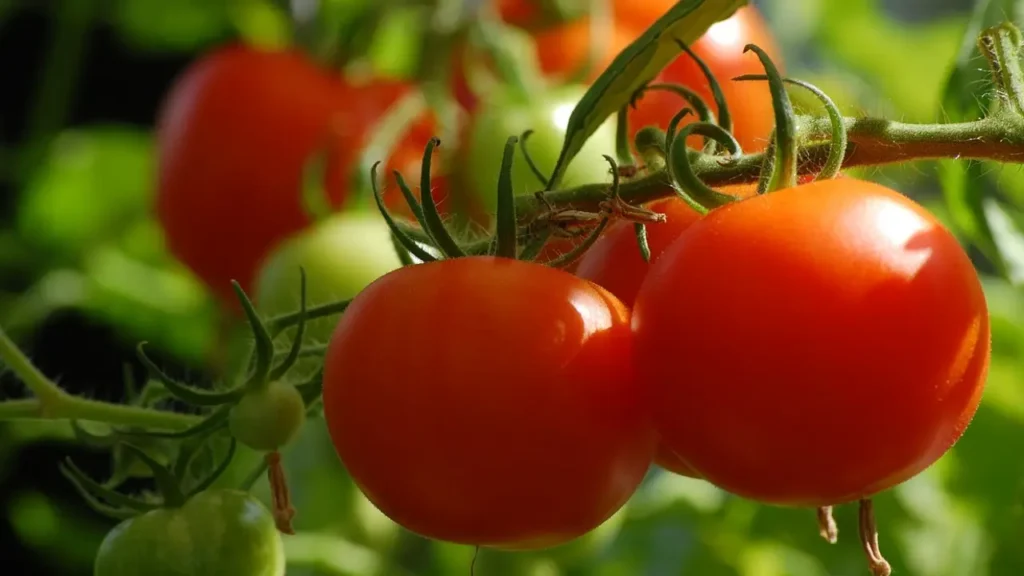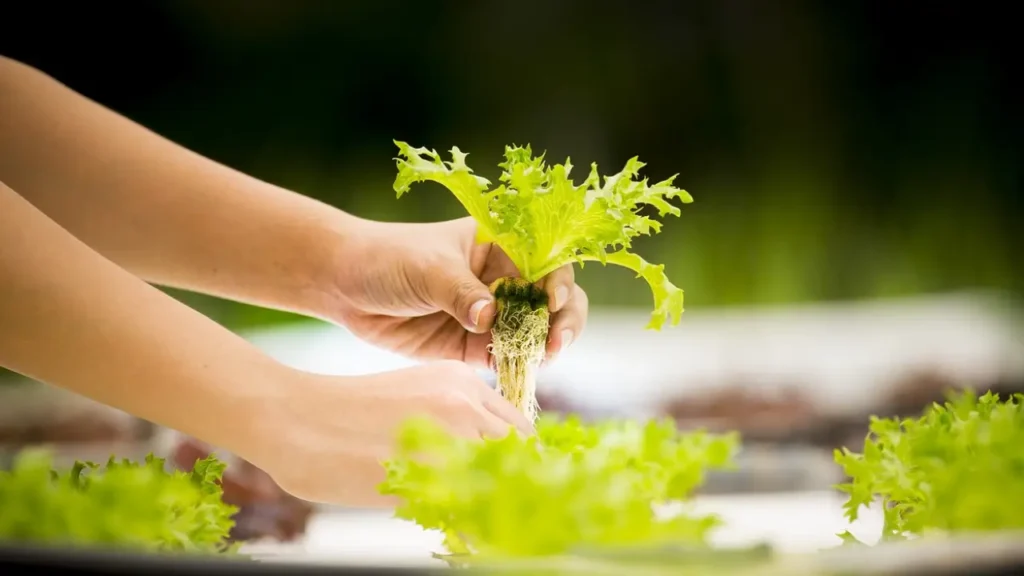Do you have an experience of watching a seed that is just as small as the tip of the finger sprout into a healthy vegetable? Radishes are fast, crisper and give a hue to any dish on the table. They are suitable for both the experienced and the new gardeners. Radishes are fast growing and within four weeks, you will be enjoying your first harvest and the fun of it all.
Radishes can grow in most climatic conditions with a lot of ease thus making this crop ideal for any gardening. Below is the information you require to grow radishes well, How to grow radish? this guide will provide you with some important pointers that you have to follow when growing radishes. Even the type of soil and water required to produce the best harvest will be established by them. Well, the best thing to do then is start growing radishes!
Key Takeaways
- Radishes are quick to mature, typically ready for harvest in just three to four weeks.
- They can thrive in a variety of USDA Hardiness Zones, from 2 to 11.
- Maintaining a soil pH between 6.0 and 7.0 is crucial for optimal growth.
- Watering consistently is essential, as radishes need regular moisture for sweet, crisp roots.
- Using an all-purpose fertilizer can significantly enhance your radish crop.
- Radishes make excellent companions to a variety of other plants in the garden.
- Successive planting can help ensure a continual supply of fresh radishes throughout the season.
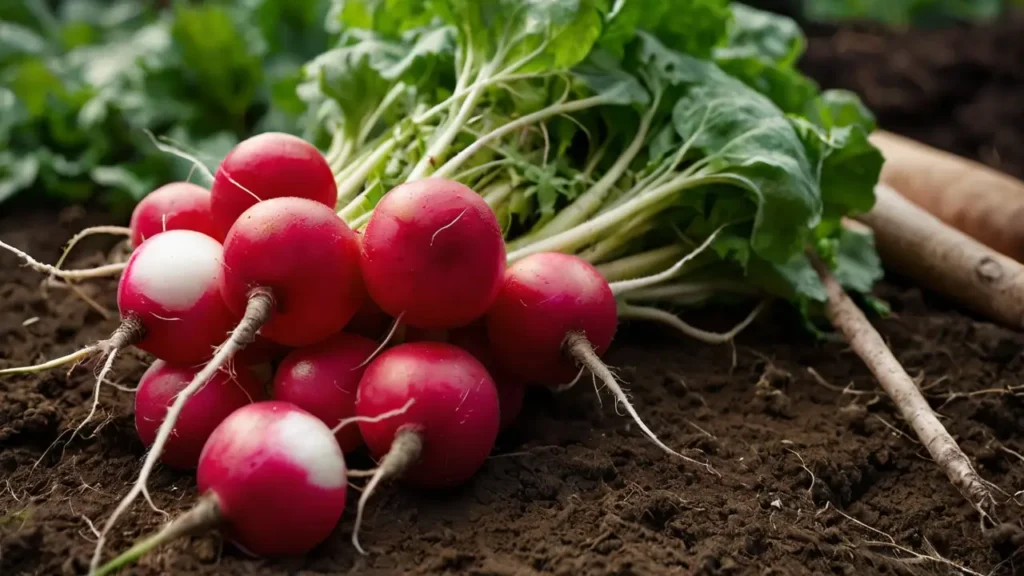
Table of Contents
Introduction to Growing Radishes
Radishes are a favourite of gardeners because these crops can run to maturity in a few weeks and boast a crisp texture. Well suited to those people in their garden looking for those quick fixes. Radish seeds are very simple to cultivate therefore it makes it suitable for the novice growers as well as developing growers.
The favourite season for planting of radishes is spring and autumn. They can therefore be grown in limited areas or in pots. These plants have small space requirements and they can be grown with other plants conveniently. So by making use of a radish planting guide you are in a position to plant right time and in the right manner, which in turn assist in your yields.
Radish seeds make germination within three to five days when it germinates at fifty to sixty degree Fahrenheit. These veggies can cope with the temperatures which range from forty to seventy degrees. This makes them favourite with gardeners who are perhaps constantly confronted with fluctuating climate conditions.
Radish plants are annual, and many of them indeed take only thirty days from planting to maturity. Newcomers in gardening may find the plant very attractive because these plants grow very fast and require very little attention.
| Radish Characteristics | Details |
|---|---|
| Growth Time | 20 to 60 days to maturity |
| Seed Germination | 3 to 5 days |
| Planting Depth | 0.5 inches apart in furrows |
| Sunlight Requirements | At least 6 hours of direct sunlight |
| Watering Needs | About 1 inch of water per week |
| Soil pH | 6 to 7 (slightly acidic to neutral) |
Benefits of Planting Radishes
It is a crop fast to grow, and has numerous nutritional and culinary values to offer. They are adored due to their colours and therefore the crunchy taste. Such information as the health benefits of radishes as well as how cooking enhances your food makes gardening and preparing food more fulfilling.
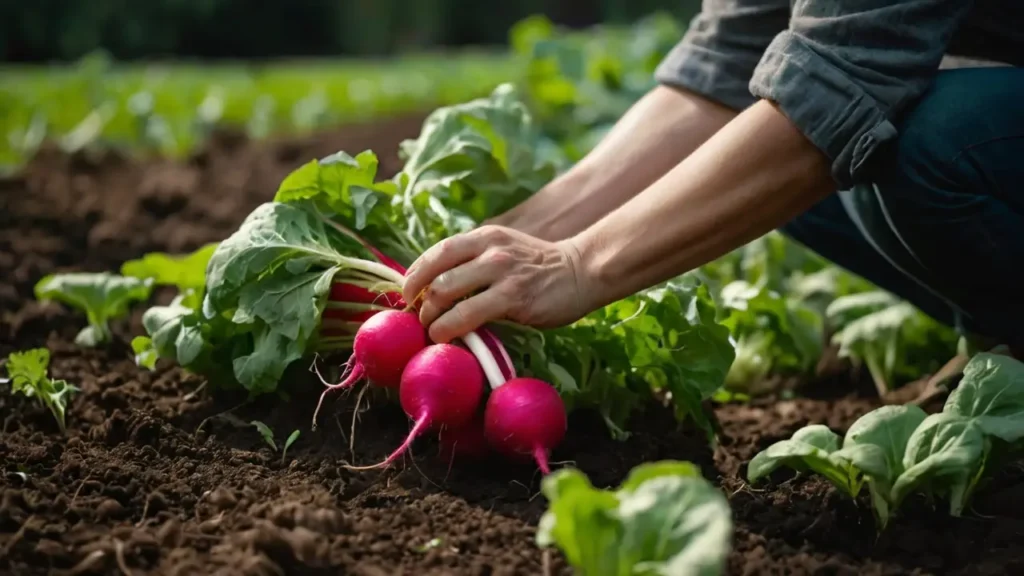
Health Benefits of Radishes
Vitamin and minerals include vitamin C, potassium, calcium, and magnesium among others are found in radish. Fiber of the raw radishes is very helpful in easing your digestion process hence consuming them is good for digestion. They contain a small amount of calories, so they good to take as snacks.
There is a lot of benefit to be derived from consuming more and more of the produce, as the following are some benefits to healthier living: They are best included in a healthy eating plan in some measure.
Culinary Uses of Radishes
Radishes are multi purpose and can be used in the kitchen in different ways. But that is just me, they are also used in salads and sandwiches to give them some crunch. If you bake them, it turns out that they are as sweet as can be. They go best with tacos, rice bowls, and any dish that you require side veggies for.
They are colorful which enhances the presentation of any dish that that they are used in. Radishes can either be used in garnishing of food or can be included as an ingredient in preparation of food. It contributes taste, texture as well as nutrients to many dishes and meals.
Ideal Conditions for Radish Growth
Good conditions are required for a good yielding of radish crop. Awareness of the conditions increases the yield of radishes and also the possibility to savor the taste of them. Some of these factors are as follows: The temperature and light exposure which helps in the growth of radishes.
Temperature Preferences
Radishes are best cultivated during the cool season ranging from 50°F to 70°F degrees. It is the cool climate that favors their growth; seeds of them germinate in 7-10 days. Begin planting in early spring preferably 4-6 weeks to the frost date, or mid summer for a fall harvest. Daikon radishes are very suitable later because they are cold-loving and can become larger.
Sunlight Requirements
For radish to grow there is requirement that is sunlight. Radishes require at minimum six hours of direct sunlight to thrive. Grown best in full sun exposure but can also do well in partly shaded location particularly in areas which experiences very high temperature. This makes it possible for gardeners to undertake the farming of radishes in various areas so that they can harvest them during in the course of the season.
| Factor | Ideal Conditions |
|---|---|
| Temperature Preferences | 50°F to 70°F |
| Sunlight Requirements | 6+ hours of sunlight (full sun or partial shade) |
| Planting Times | April-May (spring), August (for fall harvest) |
| Germination Time | 7-10 days |
Choosing the Best Soil for Radish
When growing the radishes, therefore, selecting an appropriate soil is important. The favourable condition of the soil includes the right texture and right pH of soil to support the growth of radish plants. Understanding what soil pH and texture radishes require assists the plant grow in your garden.
Soil pH and Texture
Radish is best grown in sandy or loamy soil that which is perfect for drainage and moisture retention. The ph of the soil should in this case range from 6.0 and 7.0 for the best nutrient uptake. Soil that is either too wet or too heavy is not good for radish root development and consequently the radishes will be of a poor palatable quality.
To produce the best radishes therefore, it is recommended that one takes a sample of the garden soil. This must be improved by adding organic items such as the compost or manure among others.
Improving Soil Quality
To prepare soil for radishes, one has to work it over well and mix in some organic matter. This enable nutrients to become available and at the same times help in maintaining the moisture of the soil. Good soil makes the radish roots to develop and even helps the seed to germinate faster thus producing more radishes.
It is recommended that you regularly test your soil so that it can be healthy and altered when the need arises.
| Soil Component | Impact on Radishes |
|---|---|
| Texture (Sandy/Loamy) | Facilitates drainage and root growth |
| pH Level (6.0 – 7.0) | Ensures optimal nutrient absorption |
| Organic Matter (Compost) | Improves soil aeration and moisture retention |
| Drainage | Prevents root rot and promotes healthy growth |
Thus, it can be concluded that by paying attention to the proper right combination of soil and amending it gardeners can have great radish crop. good health is when plants grow healthy which results to nice tasting radishes.
How to Plant Radishes
Understanding how to plant radishes can enable one to achieve a good crop yield. Although it is most frequently used in winter, with careful timing and the correct approach, it’s possible to cook it all year round. Radishes favor growing in spring and fall and thus can be good for any garden.
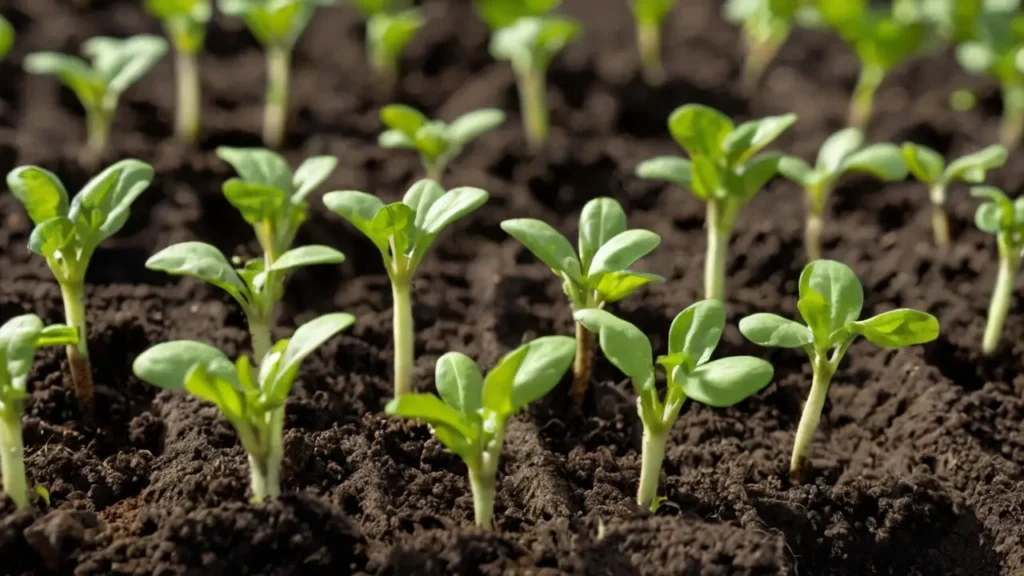
Spring vs. Fall Planting
Planted in the spring and in the fall, they are different for the taste and size. To achieve the finest outcome during planting, it is advisable to sow radishes two to three weeks before the final frost of spring, and when the ground is warm, between 55 to 75ºF. Growth is before winter; plant it in early September in the fall. The spring practitioners are relatively smaller with an insipid flavor while the ones at the fall are bigger with all intensive and purpose flavor .
Sowing Techniques and Depth
There are some techniques that should be followed, when planting this vegetable and these include; For good root development begin with loose soil that drains water very well in large pots. They should be planted with about half an inch below the soil and one to two inches apart from each other and ten to twelve inches in between rows. Find it suitable to sow every 10 days to ensure crops are available all the time. Suggested yield: About 10 bunches of radishes per 10 feet of garden space, is good for all garden size.
| Technique | Spring Planting Timing | Fall Planting Timing | Spacing | Soil Temperature |
|---|---|---|---|---|
| Sow Seeds | 2-3 weeks before last frost | Early September | 1-2 inches between plants; 10-12 inches between rows | 55-75ºF |
| Germination Time | 5-10 days | 5-10 days | N/A | N/A |
| Harvest Ready | 30 days for spring varieties | 70+ days for certain fall varieties | N/A | N/A |
These are the radish planting tips that can make gardening easier and assist with the root health and more production. When properly tended for and planned, there is no reason why radishes should not be an integral part of ones garden and diet.
Watering and Moisture Management
This was a summary of nutrients and their requirements to the health of radishes, but what seems to be very important in the production of radishes is watering. They require a constant supply of water, but it has to be water and not excessive amount of water. You should also be aware of how much water they need to grow well and develop healthy roots.
Understanding Water Needs
For radishes to grow the right drainage and water supply is expected: they require about an inch of water in a week. This retains soil moisture and at the same time helps in preventing root problems and bolting. Special attention should be taken to maintain soil and weather conditions so as to control moisture. When the plant is young or during dry seasons ensure to water it right by checking the status of the soil.
Tips for Consistent Moisture
- Mulching: Organic matter such as mulch also helps in soil moisture retention, moderates temperature to improve growth of radishes.
- Soaker Hoses: Soaker hoses water plants slowly but deeply which makes them ideal especially during very hot heat spells.
- Adjusting Watering Schedule: This should done to reflect the current climate and especially the current rainy and dry seasons. One should not irrigate after a very long time to avoid damaging the roots.
- Soil Testing: Water your plants when the soil is dry; check the moisture more frequently so as to avoid over watering.
Applying the mentioned skills will assist radishes get the appropriate moisture they deserve. It results in good consolidation and prevents problems associated with growth.
| Watering Method | Benefits |
|---|---|
| Drip Irrigation | Delivers water right to the roots, cuts down on evaporation and waste. |
| Hand Watering | Targets watering, perfect for small gardens or pots. |
| Rainwater Collection | Uses natural water, supports sustainability. |
| Sprinklers | Covers a lot of ground but can lose water to evaporation. |
Radish Care Instructions
Radish care is all about what helps these vegetables or particular type of plants to grow to the best of their capabilities. This encompasses issues to do with their feeding habits and the repellent of pests. As with everything else, proper care will lead to lots of healthy radishes.
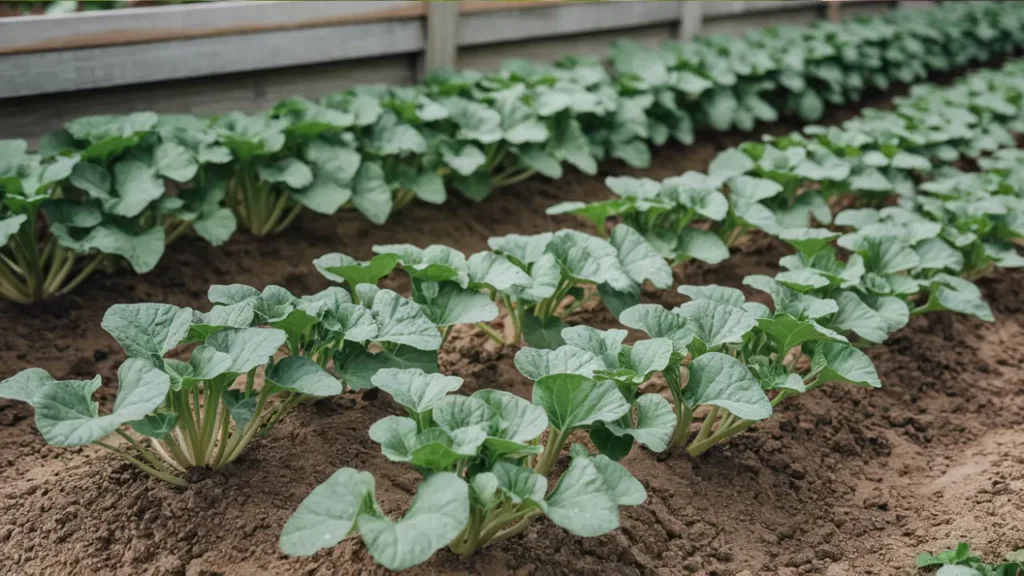
Fertilization Guidelines
To fertilize radishes, you should be certain not to overdo it. Excess nitrate interferes and in effect causes the leaves to develop disproportionately and the roots inadequately. It is better to have a little bit of fertilizer which subsequently aids in growing the roots. So, alkaline material – wood ash thrown into the plot – radicalises or, rather, alkalinises it a bit to the liking of radish.
Pest and Disease Management
This shows that protecting radishes from some pests such as; flea beetles and cabbage maggots is important. Look at your plants and see if there are any signs of damage such as withering of leaves and nibbled fronds. These are some of the indications of pests.
Organic ways of pest control include matters such as rotating crops and growing other crops around with the radishes. The plants should be exposed to enough air and the dirt should not be too wet or to dry. Further space the seedlings in order to create a wide space which would inhibit the easy access to the plant by the pests.
| Aspect | Details |
|---|---|
| Fertilization | Balanced approach, avoid excess nitrogen |
| Pest Control | Monitor for flea beetles and root maggots |
| Organic Strategies | Crop rotation, companion planting, wood ash |
| Signs of Damage | Yellowing leaves, chewed edges |
| Seedling Thinning | Space seedlings 3 inches apart for healthy growth |
How to Grow Radish from a Radish
The possibility to grow a radish from a radish will be a great idea for all the real gardeners and for everyone, who cares about the nature. Makes use of kitchen waste and can be made easily with crude implements. The below outlined steps would enable any person cultivate a radish from a radish and gain the culture of gardening.
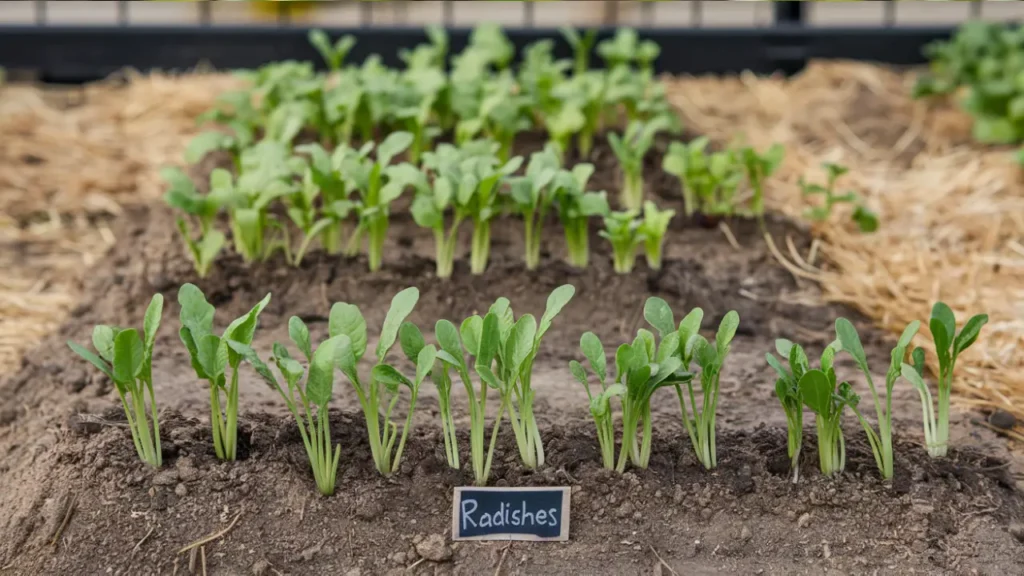
Step-by-Step Growth from Scraps
In a bid to grow a radish from kitchen scraps, follow the procedure below with the aid of a healthy radish. Forget the bottom, tear off the top only. Subsequently, put it into a glass of water using toothpicks leaving only the cut portion in the water. Place the glass on a plate with the side of the radish on a sunny area so the radish may be able to get some sunlight.
Replace the water every three to four days because the roots of the flowers need to be clean from germs. When it is a week old, roots begins to appear. It is therefore time to transfer the radish to soil.
Transplanting Tips
Gradually the roots develop, at this stage it is best to transfer the radish to the soil. Choose a location where there is good soil drainage; the soil should be near neutral, with a pH of roughly seven for the best, growth. Ensure that the covers are at least 6 inches deep so that the roots of the plants can have an ample space to grow.
After five to seven days, take the radish out of the water and place it in the soil covering it up to the leaf part. Water well and ensure it gets a one inch rainfall in a single week. You should beware of pests which may affect the growth of your radish such as; root maggots or clubroot.
With these tips, you’ll easily stand a better chance of cultivating radishes from scraps more efficiently.
Radish Harvest Timeline
One of the most important things that make the radishes have a good taste is knowing when to harvest them. Average time taken for cultivation of most radishes is about three weeks, usually twenty-one days. However, if they are left to grow for some time they harden up and are not so palatable. Check for size and indication for when it is time to pick them.
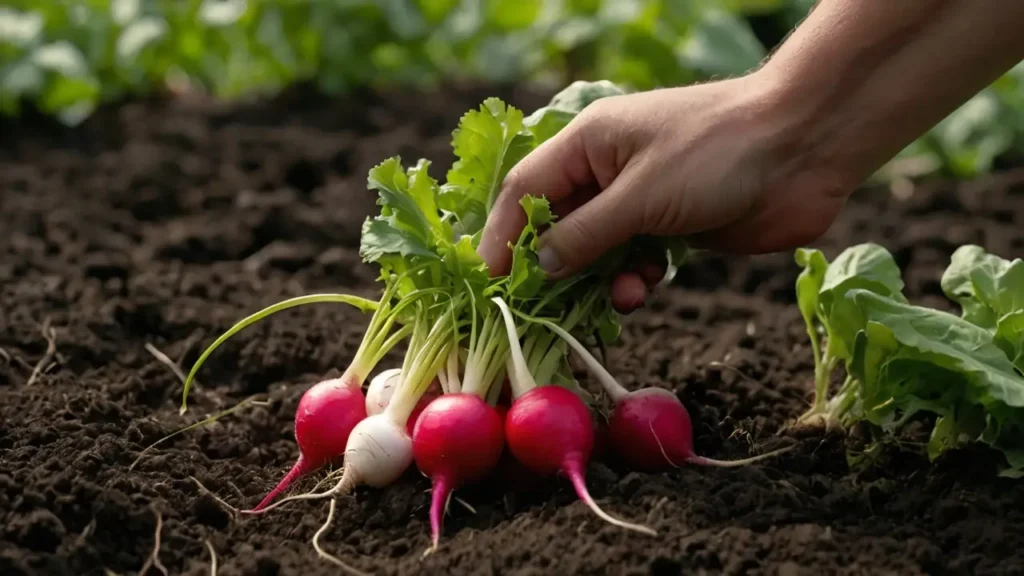
When to Harvest Radishes
As your radishes grow, you must make sure that they do not toughen up. They’re usually ready when they’re about:
- 1 inch wide for red radishes
- 3/4 inch wide for white radishes
It very interesting to learn that most of the radishes usually takes 30 to 45 days to grow. Some of them, for instance, Cherry Belle can be harvested in a three weeks’ time. Sowing of seeds of radishes should be done several weeks before the last frost in spring so that the plant grows in cool climate and the radishes do not develop a hot taste.
Signs of Radish Readiness
You should not fail to notice the signals that radishes are set for harvest. Look for:
- Leaves that are about 4 inches tall
- Roots that are the right size for the type of radish
- Avoid too much leaf growth, which means they might be crowded or lacking nutrients
Learning the signs of radish development is also a great way to determine when to harvest: Pick them when they are still medium in size so as to allow the next cycle of fruit formation. Ensure that they are given adequate space and a good soil which will enable them to grow well. When sticking to the harvesting of radishes in this timeline, then you get to enjoy the best radishes around.
| Radish Variety | Days to Maturity | Harvest Diameter |
|---|---|---|
| Cherry Belle | 21-28 | 1 inch |
| Easter Egg | 30-35 | 1 inch |
| White Icicle | 30-45 | Thumb width |
| Watermelon | 50-70 | Thumb width |
Growing Radishes Indoors
Indoor gardening enables one to cultivate radishes all through the year. By so doing, one can easily have the fresh radishes throughout the farming period. When growing radishes indoors, to regard container, soil, and light.
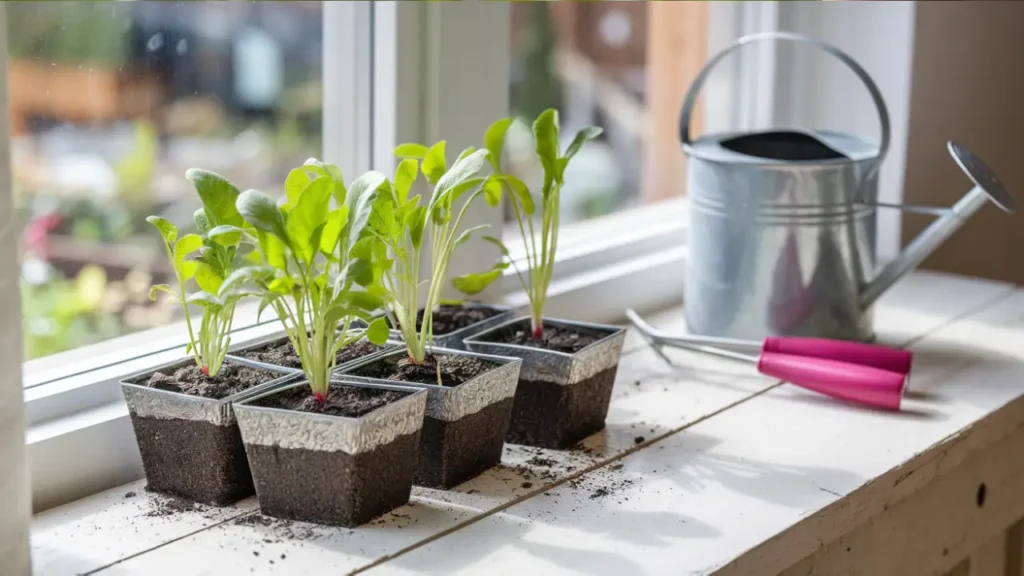
Containers and Soil for Indoor Plants
And, of course, one has to select the appropriate vessels. Separate pots that have holes on the lower part from those which do not in order to prevent your plant’s roots from absorbing too much water. The types of soil that you use in the growing of your radishes will also affect the quality of yields that you get, You should therefore use a potting mix high in nitrogen. Grows well in slightly acidic to neutral pH of soil ranging from 6.0 to 7.0. It is very important that the containers have at least six inches of soil for the roots to spread out in.
Light Requirements for Indoor Growth
Light is also important in the growth of radishes so they should be exposed to enough light as much as possible. They require an illumination of at least six hours of direct sunlight in a day. If light is not available then for ten hours use grow lights for the growth of the plants. Note that radish grows well in a temperature of 10-21°C in the first stage of its development. They know that high temperatures can retard them.
| Aspect | Requirement |
|---|---|
| Sprouting Time | 1-2 weeks |
| Light Duration | 6+ hours of direct sunlight |
| Grow Light Duration | 10 hours per day |
| Soil Depth | 6 inches minimum |
| Optimal Soil pH | 6.0 to 7.0 |
| Water Needs | 1 inch of water per week |
These are the tips that if followed would ensure that you are able to grow radishes indoors. If you get the proper containers, soil, and light, expect to harvest your radishes all year round.
Best Practices for Organic Radish Cultivation
Organic radish farming involves practice that is environmentally friendly and enhances the status of the soil and the pests. Below are concepts that depict that natural ways of gardening are good for producing better, pest-free crops:
Organic Pest Control Methods
Pest management for the radish plants assists them to grow healthy without posing a danger due to chemicals. Some of the form of natural enemies include ladybugs or lacewings since the aphids may appear late in the season. Neem oil is also effective; it controls pests were it does not harm nice insects.
Mowing of weeds, changing the type of crops that are grown and planting of flowers that accompany the cultivation of radish helps in attracting the pollinators and the beneficial insects. This causes a formation of a balanced garden that controls pests through natural means.
Benefits of Organic Gardening
Although pest control is one of the benefits associated with organic gardening; it is not the only advantage that people stand to gain in return. It provides better condition to soil by making it moist and filled with good microorganisms. The use of artificial fertilizer and chemical based pesticides is reduce by organic farming, thus it is sustainable.
Organically growing radishes entail that the food that is produced is fresher and nutritionally enhanced than the others out there. Fresh radishes consumed shortly after picking contains so much taste and nutritional benefits.
Conclusion
Radishes are easy to grow and, therefore, caring for them is a very satisfying jobs. These vegetables are fast maturing and will take only 20 to 30 days before they are ready for harvest. It makes them very ideal for any kind of gardener starting from the new ones to those who have been in the practice for a long time.
If you follow all the tips that are availed in this article, you will be ready, set, grow and have a lot of radishes. The meals you prepare with these radishes will be tastier and you will also be healthier.
Radishes are beneficial for your body and pleasant for your eyes. It means they require an ideal weather conditions –the sun to grow and thrive and equally the right amount of water. To provider a steady supply all season, it is better to plant radishes again.
This vegetable can be grown inside and outside, so they will suit any of the gardens you have. Use these techniques and taste the pleasure of having a first-hand experience of picking your own radishes. Present this to your loved ones.
Read Also : How to Grow Beet
FAQ : How to Grow Radish
How do I start growing radishes?
Begin with an area that the soil is excellent for drainage and possesses a loam type of soil. Radishes perform better under cool temperatures that is between 10-21°C. You should sow the seeds one half an inch deep into the soil. For the purpose of having a constant supply of crops, sow seeds after every one and a half weeks.
What is the best soil for growing radishes?
Radishes prefer a soil with good drainage and with a pH that ranges between 6 to 7. As stated earlier cover the ground with compost or manure so as to prepare the ground. This makes the soil many drainage properties that enable radishes to access the nutrients they need.
How often should I water my radish plants?
They require frequent watering but the soil they grow in should not be wet. Water them about an inch a week thus adjusting for climate and other factors. This is because mulching assist in retention of moisture on the surface of the soil hence play a role of preventing drought.
What pests should I watch out for when growing radishes?
Be on the lookout for flea beetles and cabbage maggots. Organically groom your pests by using beneficial insects and neem oil to avoid disturbing the growth of your radishes.
Can I grow radishes indoors?
Yes! Radish should be grown inside containers which have good drainage and on soils that are fertile. Most of these plants require approximately six hours of light on a daily basis. If required, use grow lights.
When is the best time to harvest radishes?
Cucumbers take 3 to 5 weeks to mature; radishes are ready in 3 to 5 weeks. Feel them if they are ready by its size and colour. These should be firm and brightly coloured for the best of taste and texture to the fish.
How can I cultivate radishes from kitchen scraps?
Sprouts can be grown from scraps such as radishes by placing a radish in a dish with water propping it on toothpicks. Water the soil frequently until root emerges out of the soil. After that, it is transferred to the soil for further development.
What are some culinary uses for radishes?
Radishes are wonderful in lots of recipes. They should be taken raw in salads, roasted, pickles and as garnishing. They make food more interesting due to their crispness and spiciness.
Are there specific radish varieties for spring vs. fall planting?
Indeed, certain radish varieties can be grown only in the spring or fall. Spring radishes grow quickly. It is used to point out that fall radishes can withstand the cold climate.
What are the health benefits of eating radishes?
This vegetable is very suitable for people on a low calorie diet because they contain low number of calories and high amounts of vitamin C, potassium, calcium and magnesium. They contain a lot of fiber, so they are health to your stomach and other parts of your body. Including them in your diet is wise for the body.

